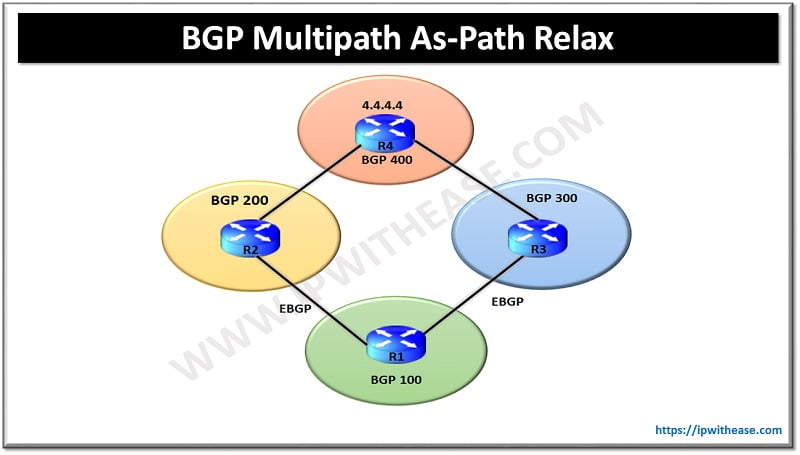Networking protocols use broadcast or not broadcast based communication to establish communication between devices in a network. Broadcast networks such as Ethernet use a broadcast mechanism where data packet is sent to the entire network but imagine a very large network where all devices are broadcasting how much chaos it will create? Or in the case of WAN where there are limitations on bandwidth or infrastructure.
Today we look more in detail about a non-broadcast type communication mechanism (NBMA), understand its working, advantages and use cases.
What is Non-Broadcast Multiple Access (NBMA)
Non-broadcast multiple access (NBMA), unlike its broadcast counterparts, works on a point-to-point communication model, where every device establishes a direct connection with every other device it needs to communicate to. Creating a virtual circuit or a logical link between devices requires communication with each other. This kind of device communication is usually referred to as nodes.
NBMA does not have the broadcast capabilities, so instead of broadcasting messages it relies on unicast and multicast communication modes. Unicast is one to one communication and multicast is one to many or many to one communication. NBMA uses several protocols to achieve this kind of communication in networks such as Network Control Protocol (NCP) to handle negotiation and communication parameters of each virtual circuit, Routing Information protocol (RIP) to enable exchange of routing information between routers.
NBMA networks use Data Link Connection Identifiers (DLCIs) to address nodes and establish connections. Multiprotocol Label Switching (MPLS) is used for circuit switching and packet switching for efficient routing of packets across networks.
How does Non-Broadcast Multiple Access (NBMA) work?
Not all multiaccess technologies support broadcast-based transmissions. Frame relay and ATM are two most common examples of non-broadcast networks which require permanent virtual circuits (PVCs) to be configured between devices as depicted in figure below.

In above figure, R1 needs to transmit an individual packet to every device it needs to reach. The router needs to know the address of his neighbours before starting communication with them. NBMA will emulate the function of the broadcast network here. Every router in the segment must be configured with an IP address of each of the neighbours. OSPF hello packets are then individually sent as a unicast packet to each adjacent neighbour in the network.
Router 1
R1(config)# router ospf 1
R1(config-router)# neighbor 10.0.0.2
R1(config-router)# neighbor 10.0.0.3
R1(config-router)# neighbor 10.0.0.4
Router 2
R2(config)# router ospf 1
R2(config-router)# neighbor 10.0.0.3
R2(config-router)# neighbor 10.0.0.4
Router 3
R3(config)# router ospf 1
R3(config-router)# neighbor 10.0.0.4
Router 4
R4(config)# router ospf 1
R4(config-router)# neighbor 10.0.0.3
R4 and R3 are elected as DR and BDR in above configuration
In case of point-to-multipoint configuration NBMA organizes PVCs into a collection of Point-to-Point networks. Hello packets are sent individually to each neighbour. It does not require DR/BDR and emulated point-to-point links can use a common subnet. All routers required to be manually configured to recognize it as point-to-multipoint segment using below command:
Router(config-if)# ip ospf network point-to-multipoint [non-broadcast]
Advantages of Non-broadcast Multiaccess Networks
- Improved network efficiency especially in case of large networks and networks having limited bandwidth
- Reduction in network congestion and performance improvement
- Better scalability as bandwidth utilization is more efficient
- Enhanced security with point-to-point communication model which ensure data packets are only received by targeted recipients reducing risk of unauthorized access and eavesdropping
- Better control over network resources with bandwidth allocation , prioritization of traffic based on needs
- Enablement of efficient management of resources and Quality of service (QoS)
Limitations of Non-broadcast Multiaccess Networks
- Increased complexity of configuration and management as compared to broadcast networks
- Time consuming as it involves setting up individual connections and maintain them
- Increased reliance of routing protocols as routing protocols determines delivery paths in the absence of broadcast-based communications
- Scalability could a challenge as number of nodes and logical links increase routing and addressing complexities also increase
Continue Reading:
Configuring OSPF Over Non-Broadcast Multiaccess Networks (NBMA)
Forwarding UDP Broadcast on Cisco Routers
ABOUT THE AUTHOR

You can learn more about her on her linkedin profile – Rashmi Bhardwaj



